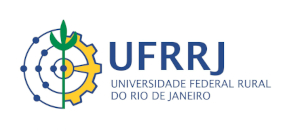Please use this identifier to cite or link to this item:
https://rima.ufrrj.br/jspui/handle/20.500.14407/19710| Tipo do documento: | Dissertação |
| Title: | Interface morfologia-fonologia na aprendizagem do emprego dos grafemas <l> e <u> em contexto pós-vocálico por meio de jogo digital |
| Other Titles: | Morphology-phonology interface in learning to use the graphemes <l> and <u> in a post-vocalic context through a digital game |
| Authors: | Canhaço, Danielle Oliveira da Silva |
| Orientador(a): | Freire, Gilson Costa |
| Primeiro membro da banca: | Freire, Gilson Costa |
| Segundo membro da banca: | Machado, Mônica de Toledo Piza Costa |
| Terceiro membro da banca: | Roberto, Tania Mikaela Garcia |
| Keywords: | Consoante lateral;Vocalização;Ortografia;Morfologia;Gamificação;Lateral consonant;Vocalization;Orthography;Morphology;Gamification |
| Área(s) do CNPq: | Letras |
| Idioma: | por |
| Issue Date: | 29-May-2023 |
| Publisher: | Universidade Federal Rural do Rio de Janeiro |
| Sigla da instituição: | UFRRJ |
| Departamento: | Instituto de Ciências Humanas e Sociais |
| Programa: | Programa de Pós-Graduação em Letras |
| Citation: | CANHAÇO, Danielle Oliveira da Silva. Interface morfologia-fonologia na aprendizagem do emprego dos grafemas <l> e <u> em contexto pós-vocálico por meio de jogo digital. 2023. 102f. Dissertação (Mestrado Profissional em Letras) - Instituto de Ciências Humanas e Sociais, Universidade Federal Rural do Rio de Janeiro, Seropédica, 2023. |
| Abstract: | Dentre os aspectos característicos do português brasileiro, destaca-se a diversidade no campo fonético-fonológico, fenômeno que perfaz as diferentes variedades linguísticas representativas de cada região do país. Essa diversidade na língua muitas vezes se reflete na aprendizagem da escrita, de modo que é comum, no momento da alfabetização, a ocorrência de erros ortográficos ocasionados pela falta de correspondência biunívoca entre o sistema de fonemas e o sistema de grafemas. Um dos fenômenos fonético-fonológicos que afeta a aprendizagem da grafia padrão no Brasil é a vocalização da consoante lateral /l/ em posição final de sílaba (coda), como em saltar [w] e Brasil [w], que ocorre na fala da maioria dos estados do país (CALLOU; LEITE; MORAES, 2007), inclusive no Rio de Janeiro, onde se desenvolveu a presente pesquisa. Para amenizar questões ortográficas, pode-se lançar mão do componente morfológico da gramática, conforme orientam os Parâmetros Curriculares Nacionais (BRASIL, 1998) e a Base Nacional Comum Curricular (BRASIL, 2017). Em vista disso, este trabalho tem como objetivos (i) geral: oferecer uma contribuição ao ensino da ortografia, considerando aspectos fonético- fonológicos do PB em interface com a morfologia; (ii) específico: elaborar um jogo, destinado a alunos do Ensino Fundamental I, envolvendo aspectos morfológicos que podem auxiliar no ensino-aprendizagem do emprego dos grafemas <l>e <u> em coda silábica. O jogo digital está organizado em fases que exploram os seguintes aspectos morfológicos: (i) uso categórico de <u> nas flexões verbais de terceira pessoa do pretérito perfeito do indicativo; (ii) plural dos nomes para definir o uso de <l> ou <u> em coda silábica nas formas do singular; (iii) relação entre palavras cognatas (p. ex. ouro/dourado; bolsa/ bolsinha). O produto final apresentado nesta pesquisa pode auxiliar o professor em sala de aula, pois representa a aplicação da gamificação (cf. GONÇALVES et al., 2016) no contexto escolar, podendo ser usado como forma de competição recreativa envolvendo um conteúdo da ortografia ou até mesmo como forma de avaliação, haja vista a pontuação atribuída pelo aplicativo ao usuário no fim do jogo. |
| Abstract: | Among the characteristic aspects of Brazilian Portuguese (BP), diversity in the phonetic-phonological field stands out, a phenomenon that makes up the different linguistic varieties representative of each region of the country. This diversity in the language is often reflected in the learning of writing, so that it is common, at the time of literacy, the occurrence of spelling deviations caused by the lack of one-to-one correspondence between the phoneme system and the grapheme system. One of the phonetic-phonological phenomena that affects the learning of the standard spelling in Brazil is the vocalization of the lateral consonant /l/ in final syllable position (coda), as in “saltar” [w] and “Brasil” [w], which occurs in the speech of most states in the country (CALLOU; LEITE; MORAES, 2007), including Rio de Janeiro, where this research was developed. To solve spelling issues, the morphological component of grammar can be used, as guided by the National Curricular Parameters (BRASIL, 1998) and the National Common Curricular Base (BRASIL, 2017). In view of this, this work has the following objectives (i) general: to offer a contribution to the teaching of spelling, considering phonetic-phonological aspects of BP in interface with morphology; (ii) specific: develop a game, aimed at Elementary School I students, involving morphological aspects that can help in the teaching-learning of the use of the graphemes <l> and <u> in syllabic coda. The developed digital game is organized into phases that explore the following morphological aspects: (i) categorical use of in third-person verbal inflections of the simple past tense of the indicative; (ii) plural of nouns to define the use of <l> or <u> in syllabic coda in singular forms; (iii) relationship between cognate words (eg. “ouro”/”dourado”; “bolsa”/”bolsinha”). The final product presented in this research can help the teacher in the classroom, as it represents the application of gamification (GONÇALVES et al., 2016 ) in the school context, and can be used as a form of recreational competition involving spelling content or even as a form of evaluation, given the score assigned by the application to the user at the end of the game. |
| URI: | https://rima.ufrrj.br/jspui/handle/20.500.14407/19710 |
| Appears in Collections: | Mestrado Profissional em Letras |
Se for cadastrado no RIMA, poderá receber informações por email.
Se ainda não tem uma conta, cadastre-se aqui!
Files in This Item:
| File | Description | Size | Format | |
|---|---|---|---|---|
| 2023 - Danielle Oliveira da Silva Canhaço.pdf | 3.35 MB | Adobe PDF |  View/Open |
Items in DSpace are protected by copyright, with all rights reserved, unless otherwise indicated.

